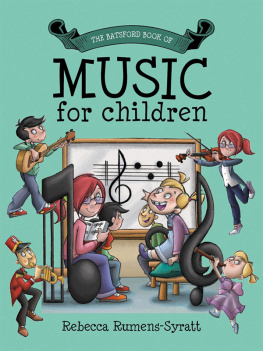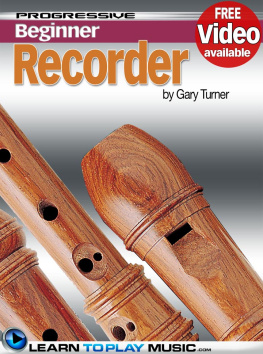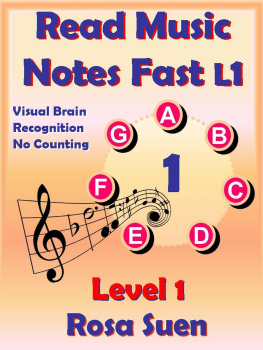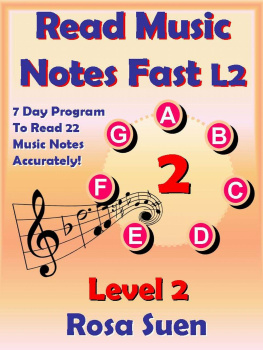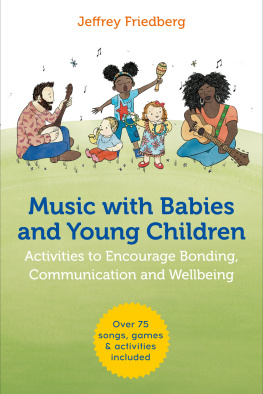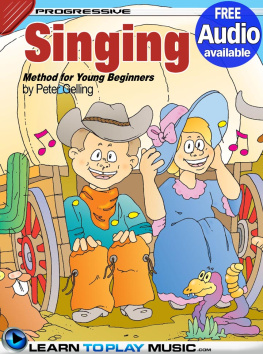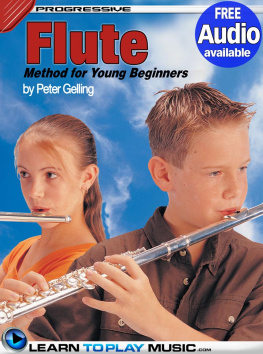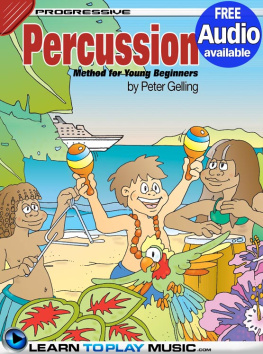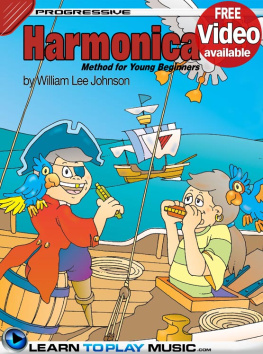Glossary
4/4 timeSee Common time.
AABB structure A structure for a piece of music where there are two main tunes, which are repeated.
A-B structure A structure for a piece of music where there are two main tunes, first one known as the A idea, the second as the B idea.
A-B-A2 structure A structure for a piece of music where there are two main tunes. First the A tune is heard, then the B tune, then the A tune comes back again. Sometimes the A tune is changed a little bit, so it is known as A2.
Acoustic The name given to music that is produced without electricity or recording technology.
Amateur musician A musician who plays purely for fun and doesnt earn money from performances.
Amplifier Often just called an amp. An box that is plugged into mains electricity and electronic musical instruments, such as a guitar, and turns the electric signals from the instruments into proper audible sounds. Amplifiers also make the music sound louder, like when they are used with a microphone.
Arpeggio A broken chord. Instead of hearing all the notes of the chord sounded at once, we hear first the tonic note, then the third, then the fifth and finally the tonic, or key note again an octave higher.
Bar Units of regular patterns of beats that we divide music into. The length of the bar is decided by the time signature. Bars are divided up on the stave by bar lines.
Bar line The vertical line that runs through the stave, to divide up each bar.
Bassist A person who plays a bass guitar or double bass (often both).
Bassoonist A person who plays the bassoon.
Baton The stick (usually white) that a conductor uses to show the musicians the beats.
Beam The name we give to the horizontal lines that join together groups of quavers or semiquavers.
Beaters Sticks with different-sized bobbles on the end, which are used to play percussion instruments.
Beats The pulse of a piece of music, like a heartbeat. The beat is regular, either fast or slow, and rhythms fit into the beat.
Binary form Music that has a simple A-B structure, with two main tunes or ideas.
Bow A long, specially shaped stick, often made of wood, which is strung with horsehair. This is scraped over the strings of an instrument to make a sound.
Bowed strings Stringed instruments that are mostly played by scraping a bow across the strings. Some common bowed strings are the violin, viola, cello and double bass.
Bridge A section of a song that typically doesnt have any singing but links the other sections together. Often, it shows off the instruments or rhythm patterns of the song, to make a change from hearing the singer. It also gives the listener a chance to think about the words and tunes of the verse and chorus. A bridge is also the name for the wooden arch on a stringed instrument, such as a violin, that holds the strings up and away from the body of the instrument.
Cellist A person who plays the cello.
Chalumeau register The name given to the lowest notes of the clarinet, which sound more like a bassoon than the bright and clear high notes on the clarinet.
Chamber music Music played in small ensembles (fewer than ten musicians), where there is normally only one person per part of the music. The name comes from the eighteenth century, when it referred to the number of musicians who could fit comfortably into the kings chambers in the palaces of Europe.
Chord When a group of three or more notes is heard at the same time. The most common type of chord is the triad, built on the first, third and fifth notes of a key. Other notes can be added, or the order of notes can be changed, to alter the mood and sound.
Chorus This has two meanings. It can mean the main bit in a song, which is repeated several times with the main themes, words and tune. Or it can refer to a big choir, either on its own or as the backing singers to the soloists in an opera or a musical.
Chromatic When a tune or a chord uses notes from the chromatic scale that make clashing sounds.
Chromatic scale A scale that uses every note, including all the flats and sharps (both the black and white piano keys).
Clarinettist A person who plays the clarinet.
Clef The musical symbol that is placed at the top of the stave (at the beginning of the music and on every line afterwards), which shows the pitch of the music.
Colour When talking about music we mean the colour of the sound, so whether it is dark or sparkly. Another way of describing timbre.
Common time Another name for 4/4 time, which gets its name as because it is the most used time signature. Its symbol is a little curly C that goes in the place where the numbers usually go for the time signature.
Composer A person who thinks up musical ideas and creates music for other people to play. He or she will often write these down.
Concert pitch The agreed standard for tuning musical instruments. People who play in ensembles use it in order to play together.
Conductor The musician who stands before an ensemble and leads the players, telling them when and how to play by moving his or her hands or a stick called a baton. The conductor also leads the creative ideas in rehearsals.
Conservatoire A special university (college) for musicians, where they study their instruments and performance at a professional level.
Contrabassoon A giant bassoon that sounds one octave lower than a normal bassoon. It is a subsidiary instrument, so is played by a person who plays regular bassoon, too.
Conventional tuning Instruments that use conventional tuning are instruments that arent transposing instruments. So when they play a C, it sounds exactly like the C on the piano.
Coordination The skill of using several parts of our bodies at once. For example we need coordination to play a drum kit as we have to use the pedals with our feet and sticks with our hands at precisely the right time as well as using our eyes and ears to read the music or watch the bandleader and listen to the group.
Cor anglais An instrument that uses a double reed; it is like an oboe but bigger and deeper, with a very mellow and beautiful sound.
Cornet An instrument like a trumpet but with a more mellow sound. Often played in military and brass bands.
Crescendo A term that means gradually getting louder.
Crook The part on a wind or brass instrument that attaches the mouthpiece or reed to the main bit of the instrument. Some instruments have a set of different-sized crooks that they can swap between.
Cross-rhythm The name given to a rhythm pattern that doesnt fit with the regular beat of the song and therefore doesnt sound quite in time with it. The strong beats come at odd places, not necessarily at the beginning of the bar.
Crotchet (quarter note) A note lasting one beat.
Damper pedal The right-hand pedal on a modern piano which, when pressed, makes the notes smooth into each other and resonate for longer.
Degrees of the scale The name we give to each step of a scale. In regular major or minor scales, there are seven steps before we repeat the starting note. Each step has a special name or can be referred to by number. For example, D is the second degree of the C major scale because it is the second note up.

